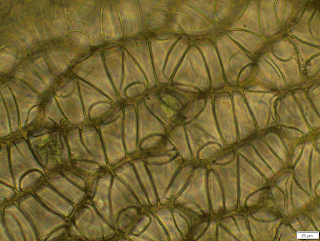 |
| Figure 1. Cyathus striatus Note the fuzzy exterior and striated interior of the peridium. |
Figure 3. Young Cyathus striatus with 'lid' still present
Figure 4. Cyathus striatus growing in the mulch
Phylum: Basidiomycota
Family: Nidulariaceae
Species: Cyathus striatus
Common name:Bird's Nest Fungus
Collection date: 9/2/2015
Collector: Caroline Kaylor Georskey
Habitat: This specimen was found in a shady mulch pile in Bonney Castle Garden (Hiram, OH. It was fairly dry.
Description: This specimen has multiple stages of development as shown above. Figure 3 shows a young peridium that still has it's 'lid'. This species has a fuzzy-like exterior (fig. 1& 3) and a striated interior (fig. 1). It is commonly found on mulch (as the case of this specimen). White to gray eggs (peridioles) are inside the ' nest' and are attached to the side (fig. 2).
Key used: Arora, D. (1986). Mushrooms demystified: A comprehensive guide to the fleshy fungi (2nd ed.). Berkley: Ten Speed Press.
Bird's Nest Fungi
Nidulariales p. 778
1. Not as above; fruiting body cylindrical to mug or cup-shaped when mature, containing more than one egg (unless all but one have been expelled)...
2. Not as above; fruiting body typically with a "lid" when very young, the nest usually well formed and persistent; eggs may or may not be imbedded in a mucilage...
4. Eggs white to gray, brown, or black, often (but not always) attached to side of nest by a minute cord or short stalk, not imbedded in a mucilage; sides of nest vertical to tapered...
6. Interior of nest longitudinally striate (with distinct radical grooves)...
Cyathus striatus
For more information on Cyathus striatus please review the following links:
http://www.mushroomexpert.com/cyathus_striatus.html
http://www.first-nature.com/fungi/cyathus-striatus.php
http://botit.botany.wisc.edu/toms_fungi/may2006.html
























